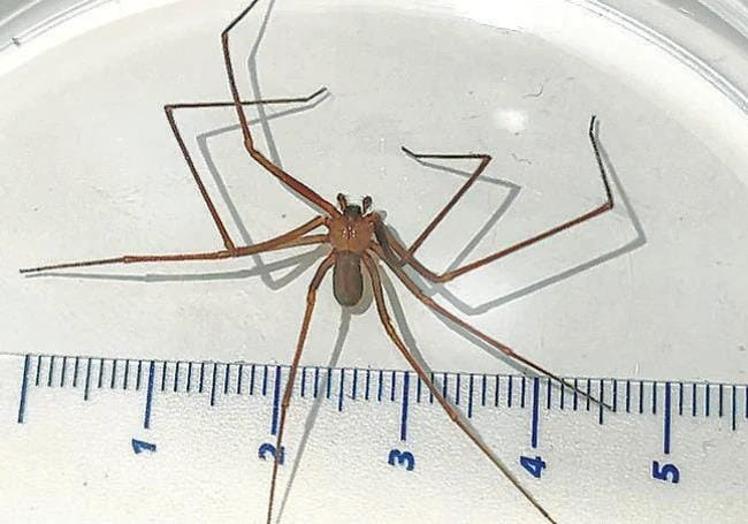Poisonous 'violin spider' bites man in Spain's Basque Country
The attack is the most recent after 12 cases were reported in Spain between 2005 and 2023
Terry Basterra
Friday, 28 June 2024, 12:47
In the Iberian peninsula there are around 1,400 documented spider species. Only three of them are capable of inflicting serious clinical conditions with their bite. It is very rare for the two most venomous types to come into contact with humans. These are the European black widow and the Iberian black widow. Both inhabit very restricted, rural areas far from urban centres.
However, it's a different situation with the third species. This is the Loxosceles rufescens, popularly known as the violin spider or Mediterranean recluse spider. It is widespread, but more significantly, has adapted to living in homes, especially older ones. It favours quiet spaces like attics, lofts, and basements and likes to hide in boxes, barns and woodsheds, or under stones and logs.
Although it is a non-aggressive species, when the violin spider bites, it can cause significant skin lesions. The enzymes in its venom are capable of causing necrosis (tissue death) in the area of the bite. When these symptoms occur, it's essential that the affected person receives medical attention. For the first time in the Basque Country, a bite from one of these spiders has been reported. In reality, there were three separate bites on the same person in their home in Santurtzi.
According to a scientific article published this month in the journal of the Spanish Society of Environmental Health (SESA), the events took place between May and September 2023, at home on the balcony of the victim. The 42-year-old man, noticed that he had been bitten by an insect on the inside of his left forearm on 17 May of last year. Four days later he went to his GP with pain and pus accumulation in the area. The abscess reached a diameter of two centimetres. The doctor, in addition to draining the wound, prescribed antibiotics for seven days.
12 cases of spider bites have been reported in Spain between 2005 and 2023
With the second bite, registered in June last year, the recovery was better. However, with the third bite in September, the man needed to go to the hospital twice as the condition did not improve with antibiotics. On both occasions, he was admitted for observation. According to the article, both in the primary care consultation and in the emergency department, he was diagnosed with a compatible cutaneous necrotic syndrome due to a bite from the Mediterranean recluse spider, as stated in the scientific article signed by Mikel Alexander González, PhD in Biology and entomologist.
After the third bite, the patient searched among the pots on his balcony and, after spraying the plants with insecticide, claimed that two spiders emerged whose description matched that of this species. Interestingly, at the time of all three bites, the affected person was smoking.
There are 1,400 species of spider on the Spanish mainland and only three have venom that is dangerous for humans
González stresses that it is very unusual for spiders to bite. He says that on most occasions the bites that people attribute to these arachnids have been caused by other insects.
"They don't bite, not least because they don't feed on blood. Most spiders, despite their bad reputation, are harmless. When they do bite, it is usually by accident and the bite is only dangerous in very few cases," explains the expert.
Even with violin spiders, their bites often go unnoticed and the person affected has no symptoms or only a slight itch. But there are people who suffer from a characteristic clinical condition called loxoscelism.

Between 2005 and 2023, 12 accredited cases of poisoning caused by the violin spider have been reported in Spain. The article signed by González reports four more, including the case of the man from the Basque Country. The low prevalence of severe bites, despite the widespread presence of this spider, supports the experts' view that "it is not an aggressive species" and they insist that its bite is accidental.
Surveillance programmes
The violin spider is brown, long-legged and measures up to four centimetres. Another of its characteristics is that instead of 8 eyes, it has 6. It is called a violin because of the way it looks when viewed from above. Although it is thought to be African in origin, it has invasive tendencies and is widespread throughout the Mediterranean. It likes to hide in small, dark places, often in boxes. In fact, González points out that it may have been through boxes that it has spread, thanks to "trade and transport". The article underscores the importance of raising awareness among the population and urging authorities to include this spider in urban pest surveillance and control programs, as it poses "a public health issue affecting both private and public domains."
